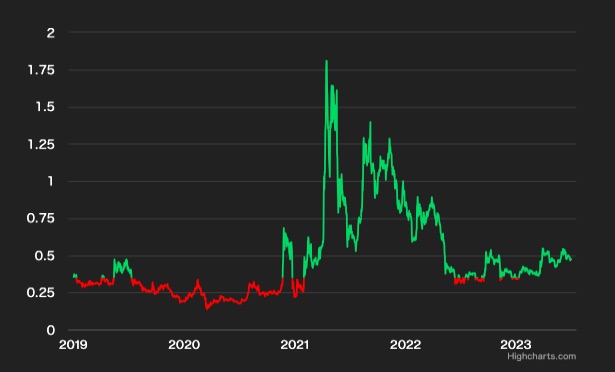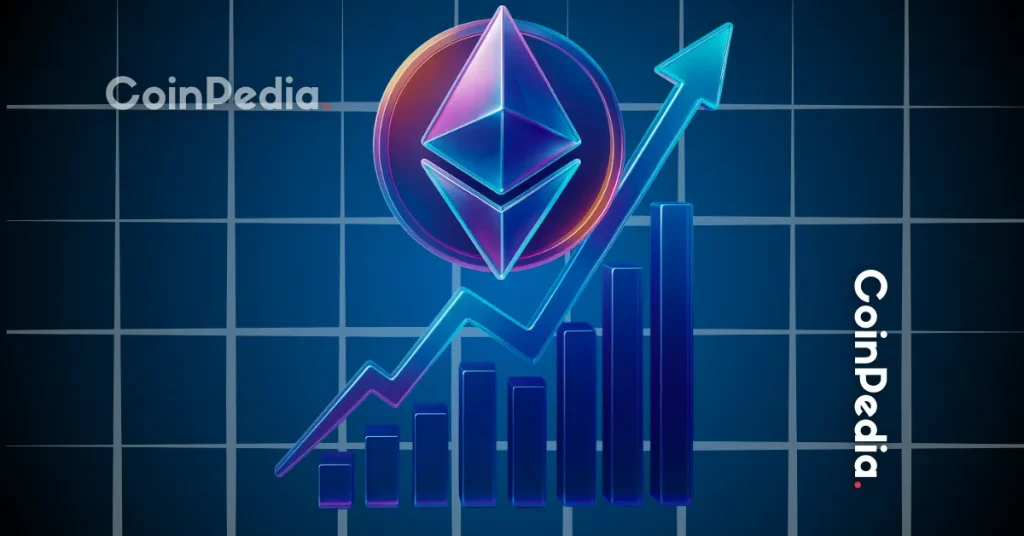
Brad Kimes is a professional drummer. For 30 years he has played in a variety of bands including rock, funk, blues and R&B. Aspiring to start his own business, he invented a playpen for the beach in between band activities. He found a supplier in China and ended up doing an international import deal. For cross-border payments, he was forced to use an inconvenient international financial system called “SWIFT.”
SWIFT took time. It also costs more. “You don’t have a tracking number,” Kaimes said, adding, “Six days later, when the payment arrives at the other party, you know the exchange has moved in the meantime. Then you have to pay the difference.” .
Is there a better solution?
XRP over Bitcoin
This is where crypto assets (virtual currencies) come in.
This is the “secret story of birth” that we often hear about crypto assets. I have heard many stories like this. Frustration in the face of complications when trying to do something simple with traditional finance. That’s where the inspiration comes from, “That’s where I discovered Bitcoin (BTC).”
But Kaims already knew Bitcoin. But I didn’t see Bitcoin as a suitable solution. Instead, he found something newer that he believed was cheaper, faster, and more efficient.
XRP (XRP).
Created primarily by the team that co-founded Ripple, XRP was originally conceived by Jed McCaleb as a “bitcoin without mining.” It is designed with banks, businesses and financial systems in mind.
If Bitcoin’s unofficial motto is ‘be your own bank’, XRP’s motto is a bit more modest: ‘improve your bank’. XRP is at odds with most of the dominant ideologies in the cryptocurrency industry. For years, XRP has been ignored, overlooked, and downright despised by much of the crypto industry.

 John Deaton and his daughter (Twitter)
John Deaton and his daughter (Twitter)“Technology works. It does what it says it can do,” said Kimes. After doing some more research, he realized that XRP could be a very easy solution for banks’ highly inefficient processes. Moreover, it does not require mining energy-intensive proof-of-work (PoW) models.
“Bitcoin costs much more money to solve the same problem.”
However, Kaims continued that he has no animosity toward Bitcoin because it “showed us all what was possible.” He sees bitcoin as a key stepping stone technology, sort of like pagers and early flip phones. But Kims thinks that “no one is using early mobile phones anymore.”
I agree with the idea of Bitcoin
Kimes sympathizes with the philosophy of Bitcoin. “Bitcoin in the white paper is anti-banking, anti-establishment,” said Kimes.
“The libertarian in me is very much drawn to that. The libertarian in me is crazy about it.
After that, Kaimes took a deep breath. And he added an important disclaimer. “I’m an adult, too,” Kaimes, 52, said.
“As an adult, I understand that incumbents, systems, governments and central banks around the world do not take such nonsense.”
Kimes may not like banks and governments, but he also thinks it’s absurd to imagine that a decentralized money like Bitcoin could actually overthrow such a system. The government, he said, “will bring in tanks and guns before letting an unnamed person[Satoshi Nakamoto]do whatever he pleases. That can’t happen.”
Kymes now shares that message in his daily content on XRP, Digital Perspective. The drummer now drums about why XRP, and its affinity with the banking system, is more likely to succeed than Bitcoin’s anti-establishment ethos. Advertise.
“The establishment cannot stop the technology, but they can tax it, regulate it, and make it disappear,” said Kimes of Bitcoin.
XRP Army
Kimes is a central figure in the XRP community called “XRP Army”. The XRP Army is hated by many in the crypto industry. XRP has long been derided for not being a “real” cryptocurrency project.
* “Army” means enthusiastic supporters and fans. There is also a “SHIBArmy” in crypto assets. It is well known that fans of the popular K-pop group “BTS” are called “BTS Army”.

 BTS ARMY
BTS ARMYIt is not truly decentralized (according critics), as Ripple Labs owns the majority of the 100 billion XRP in circulation and continues to sell it on the secondary market on a fixed schedule. (XRP proponents may have once hit the mark with the criticism that they are “too centralized,” but now they say that Ripple Labs controls only a fraction of the XRP Ledger.) arguing).
The XRP Army is known by outsiders for attacking Ripple’s critics, protesting FUD (fear, uncertainty, doubt), and applauding price gouging. Army occasionally tweets menacing and vaguely threatening tweets such as “Ignore Ripple and XRP at your own risk.”
This situation has been going on for years. The XRP Army is so influential that in 2018 it was named the “Most Influential Person in Crypto Assets” by US CoinDesk every year.
“The XRP Army is set apart primarily by its size and organization. In the case of other coins, questioning their merits has only generated a handful of backlash. But Army Attacks are unmatched in terms of numbers, strength, duration and consistency,” CoinDesk’s David Floyd noted in an article at the time.
No wonder Floyd knew that. Even before he wrote this article, the XRP Army was mobilized to attack him, making him a “hired assassin,” a hopelessly “hate person” who suffers from “paranoid disorder.” was calling.
“Adult in the Room”
More recently, Fortune editor Jeff Roberts wrote a largely XRP-friendly article titled “Ripple and XRP may finally be for real.” Even when he wrote, some of the XRP Army attacked him on Twitter (I wasn’t attacked by the way, I was ignored by some of the XRP Army who asked for coverage, but turned against was never taken).
If it’s true that the XRP Army has vocal extremists with toxic tweets (there are plenty of them in the crypto industry, after all), it’s also true that there are many realists like Kymes.
Realists are utility-focused and consider themselves “adults in the room” (an expression we’ve heard many times in our interviews). Take, for example, the recent Kaimes XRP convention in Las Vegas.
While some came to Bitcoin Miami dressed as wizards, many of the XRP devotees to Vegas were older men in suits. I’m a businessman. “I was 37 and one of the youngest in the room,” one participant told me.
Become a global stablecoin
One of the XRP influencers who came to Vegas was the “Digital Asset Investor,” DAI, who delivers daily content about XRP. A few years ago, he was fascinated by Ripple’s project after scrolling through Coinmarketcap.com and researching the top 30 crypto assets and their leadership team.
“Ripple was the only place that had entrepreneurs with MIT and Harvard degrees,” DAI recalled, adding, “They were all pedigreed Silicon Valley moguls. No, it’s something special.'”
DAI likes that the “grown-ups in the room” are literally grown-ups who can sit with other big names. If Bitcoin is for outsiders, XRP is for insiders.
“I know[Ripple CEO]Brad Garlinghouse was in Switzerland with someone from the Central Bank of Hong Kong. He also sat with someone from the Central Bank of Russia,” DAI said. You know, this is something we’ve been researching and obsessed with for five years.” DAI believes Ripple has “worked with 50 central banks around the world.”
The magic of XRP, Kaimes said, is that it provides an instant tool for payments without the need for organizations (like central banks) to have large liquidity pools. Free up resources and save money. For this reason, Kimes and DAI are bullish that one day XRP could be designated as the world’s stablecoin. Instead of replacing the dollar, renminbi and euro, XRP bridges them all.
All of the above is just a prelude to the XRP Army’s genuine bullishness on XRP’s real-world utility. They hope that XRP will improve on the current system, gain widespread adoption, and eventually push prices “to the moon.”
sluggish price
But the XRP Army also has its grievances.
The problem is that XRP hasn’t gone to the moon. Not even close. In January 2018, when Bitcoin hit a then all-time high of nearly $20,000, XRP was just over $3. In the ensuing bear market, prices slumped. When Bitcoin returns in 2021, the XRP Army hoped that their holdings of XRP would do the same.
Bitcoin has climbed above $60,000, or tripled its all-time high in the previous cycle. By the same logic, XRP should have reached $9, maybe $10.

 XRP price change since 2019 (CoinDesk)
XRP price change since 2019 (CoinDesk)But I couldn’t even get over $2.
Prices plummeted to around 50 cents, leaving many in the XRP Army frustrated and bitter, especially those who paid more than $1.
The obvious reason for the price slump is the SEC lawsuit against Ripple Labs in December 2020. Lately, it seems like we’re finally getting closer to a solution.
But this is only part of the story. Kimes, DAI, and the XRP Army have different theories as to why XRP has lagged behind Bitcoin and Ethereum. It’s an explosive hypothesis that will energize the community. Little is said about it outside of the XRP army.
It’s also such a provocative hypothesis that they thought CoinDesk would never write about it. It is called “ETHGate”. (Continued in Part 2)
※Titles omitted
|Translation and editing: Akiko Yamaguchi, Takayuki Masuda
|Image: Shutterstock
| Original: Why the XRP Army Keeps Fighting
The post XRP Army, why keep fighting (Part 1): Adults in the room | CoinDesk JAPAN | Coin Desk Japan appeared first on Our Bitcoin News.

 2 years ago
138
2 years ago
138














 English (US) ·
English (US) ·